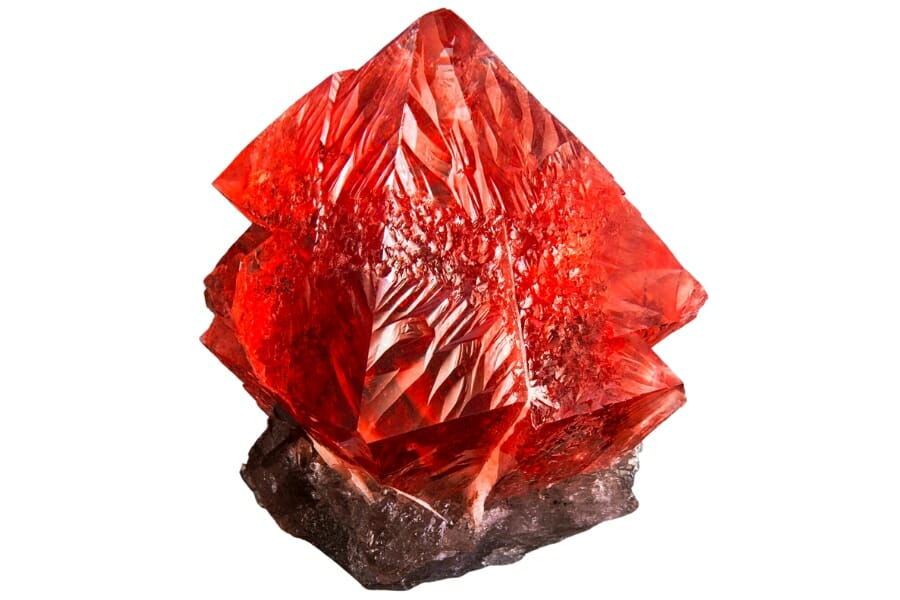Illinois is certainly much more than cornfields and cities. It’s a geological wonderland filled with beautiful rocks, stunning minerals, precious gems, and radiant crystals. From the breathtaking limestone bluffs at Starved Rock State Park to the hidden geodes along the shores of the Mississippi River, there are hidden treasures here!
In the heart of Hardin County, you’ll find fluorite crystals in a rainbow of colors. At Mazon Creek, you might stumble upon incredibly preserved fossils that are millions of years old. And who knows, you might even find a Lake County diamond!
The amazing part? You don’t have to be a professional geologist to appreciate these natural wonders. They’re part of our state’s rich tapestry and they’re accessible to everyone. In this article, we’ll get up close with the different types of rocks found in Illinois, so you can see for yourself how uniquely beautiful they are.
A List of The Common Rocks, Stones, and Minerals Found in Illinois
Think of Illinois this way: it’s like a treasure trove waiting to be discovered and opened. Our state has different natural wonders, and if you’re after them, our helpful comprehensive guides will surely come in handy for you. Check these out:
Illinois Rock and Mineral
First off, here are the rocks and minerals that symbolize our state.
| Illinois State Rock | Dolostone |
| Illinois State Mineral | Fluorite |
To ensure adherence to law and to sustainable rockhounding practices during your exploration, it would help to learn all about our state’s collecting guidelines by visiting the official website of the Illinois Department of Natural Resources (IDNR), which regulates the activity here.
Always Confirm Access and Collection Rules!
Before heading out to any of the locations on our list you need to confirm access requirements and collection rules for both public and private locations directly with the location. We haven’t personally verified every location and the access requirements and collection rules often change without notice.
Many of the locations we mention will not allow collecting but are still great places for those who love to find beautiful rocks and minerals in the wild without keeping them. We also can’t guarantee you will find anything in these locations since they are constantly changing.
Always get updated information directly from the source ahead of time to ensure responsible rockhounding. If you want even more current options it’s always a good idea to contact local rock and mineral clubs and groups
Fluorite
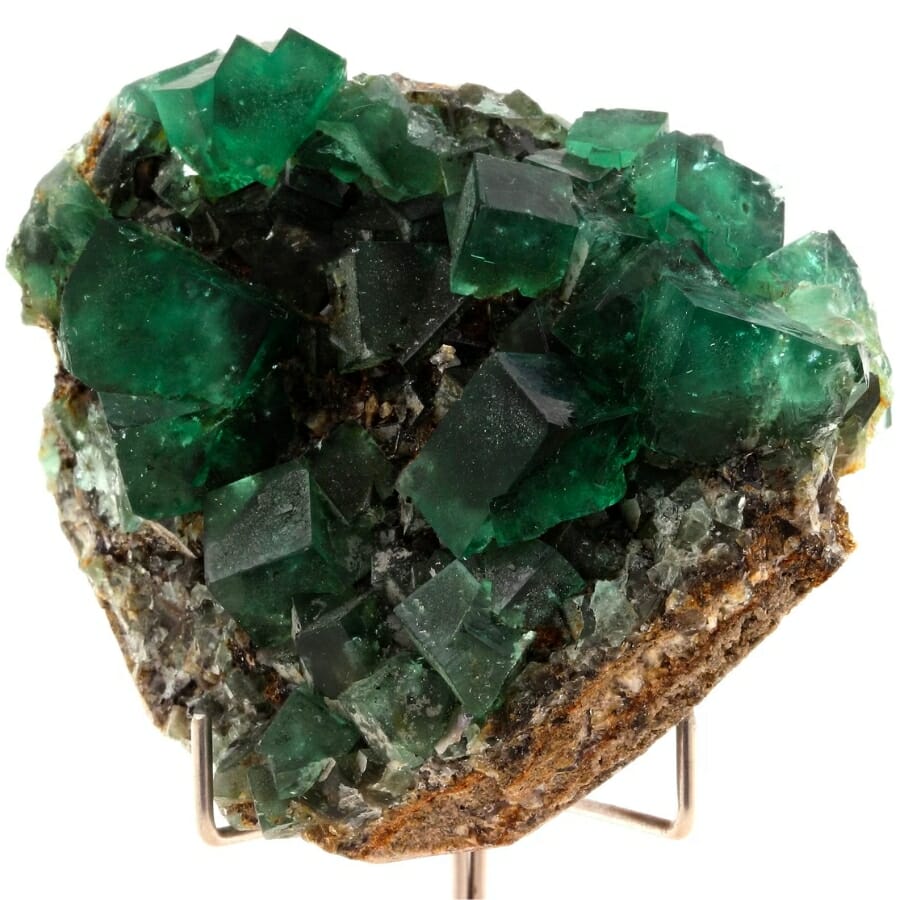
Fluorite is a truly captivating mineral, known for its wide range of vibrant colors and stunning crystal shapes. It’s actually formed deep within the Earth when hot, mineral-rich fluids fill cracks and cavities in rocks. Over time, these fluids cool down and crystallize into fluorite.
Illinois, in particular, is famous for its own type of fluorite, affectionately known as “Illinois Blue” for its unique, vibrant blue-purple color. Our state is one of the largest producers of this mineral in the U.S. In fact, fluorite is Illinois’ official state mineral.
This mineral is not just a pretty face, though! It’s incredibly useful, too. It’s a key ingredient in the manufacture of steel and other metals, and it’s also used in the production of a wide range of chemical products. Truly, fluorite’s value is understated as it’s a critical part of many industries that keep our world running.
Where you can find Fluorite in Illinois
You can find fluorite if you explore the following sites in our state:
- Cave-in-Rock area in Hardin County
- Mines and dumps in the Rosiclare area, Hardin County
- Golconda area mines in Pope County
Bornite
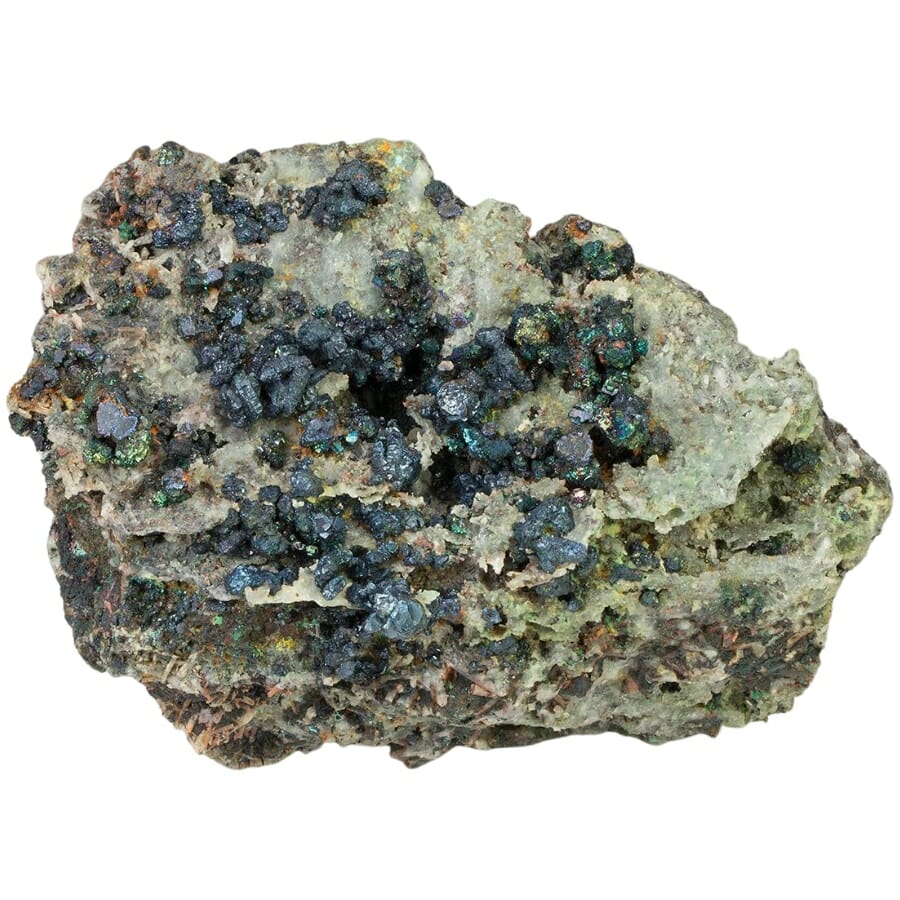
Bornite is often called “peacock ore” because of its striking, iridescent colors that shimmer in blues, purples, and greens when exposed to air.
This mineral is typically created in high-temperature, underground environments, where circulating fluids rich in copper and iron interact with surrounding rocks.
What’s really cool about bornite is that its value extends far beyond its beautiful exterior. It’s an important ore of copper, a metal used in everything from your house’s electrical wiring to the coins in your pocket. The copper from bornite and other minerals helps build our cities and powers our modern technologies.
Where you can find Bornite in Illinois
If you explore Conco Quarry in North Aurora in Kane County, you can find specimens of bornite.
Galena
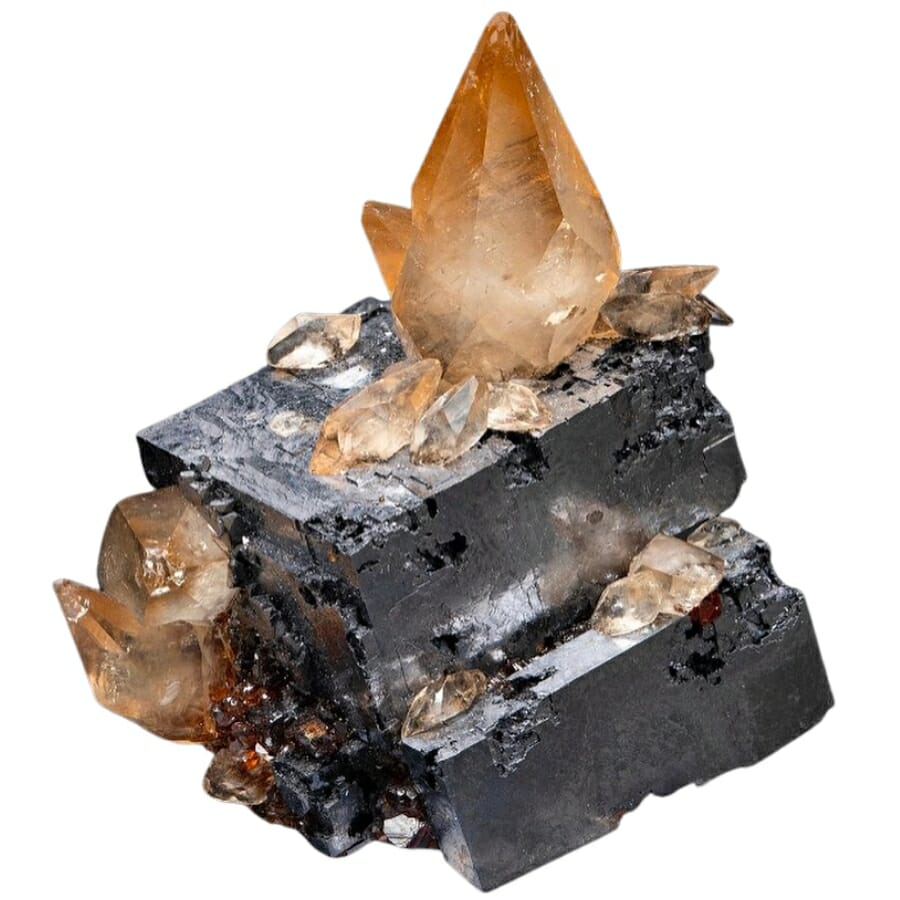
Galena is a truly spectacular mineral, not just for its shiny, metallic luster, but also for its incredible cube-like crystal shapes. It’s formed in a variety of geological environments, including sedimentary rocks and hydrothermal veins, where hot water carrying dissolved minerals fills cracks in the earth.
Galena is the most important ore of lead and also often contains silver. Its lead is used in batteries, radiation shielding, and many other applications, while silver is valued for jewelry, coins, and various industrial uses.
This mineral has a special place in the geology of Illinois since the city of Galena, a place renowned for its rich lead and zinc mining history, was named after it.
Where you can find Galena in Illinois
We recommend visiting the following spots where you can find galena:
- Mahoning No. 3 Mine in Hardin County
- Apple River area lead mine dumps in Jo Daviess County
- Golconda area mines in Pope County
Zinc
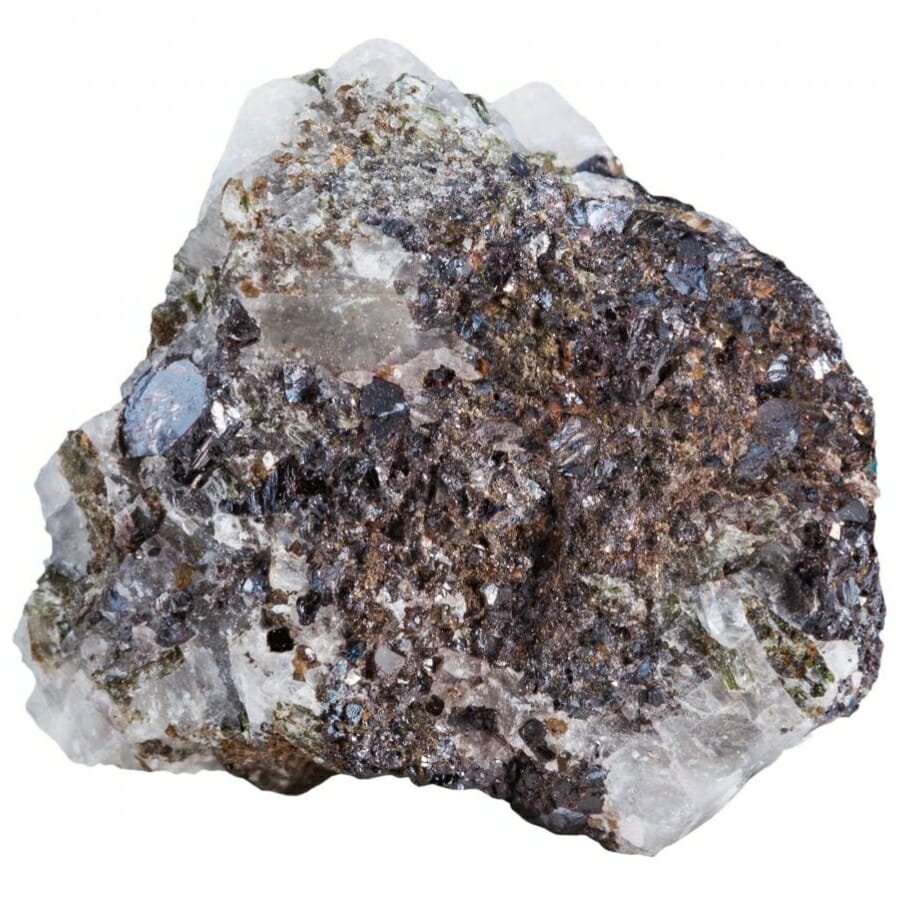
Zinc is often found hidden away within certain types of rocks and minerals. In fact, it’s usually not found alone, but instead forms as part of minerals like sphalerite, which is a common zinc ore. Zinc often forms in geological environments where heated, zinc-rich fluids encounter sulfur.
Did you know that zinc is an incredibly important mineral? It’s used to prevent rust on iron and steel, an essential nutrient that our bodies need, and it’s even used in things like sunscreen and batteries.
Here, zinc has a special history, particularly in the northwestern region around the city of Galena. This area was once home to bustling zinc mines, extracting zinc from sphalerite and other minerals.
Where you can find Zinc in Illinois
The Mahoning No. 3 Mine in Hardin County is known for having rich Zinc deposits.
Dolostone
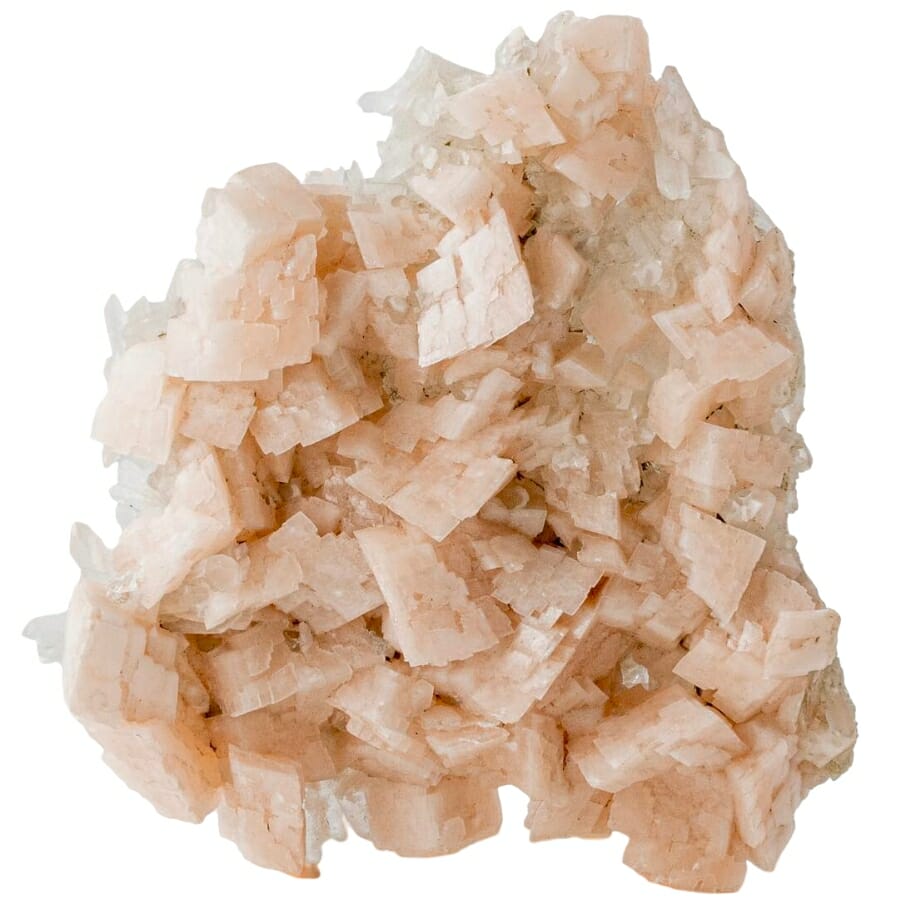
Dolostone starts life as limestone, which is mostly made of the mineral calcite. Then, under the right conditions, magnesium-rich groundwater flows through the limestone, and a chemical reaction occurs that transforms the calcite into the mineral dolomite. The end result of which is dolostone.
This rock has valuable uses today. It can be crushed into a material called dolomite lime, which farmers use to improve the soil in their fields. It’s also used as a building stone and in the production of glass and ceramics.
You can find dolostone as part of the bedrock, especially in the northeastern part of our state. It was recently officially designated as Illinois’ official state rock.
Where you can find Dolostone in Illinois
Some of the areas in our state where you can find dolostone are in Carroll County, particularly in:
- Mt. Carroll lead diggings
- Boy Scout Camp
Strontianite
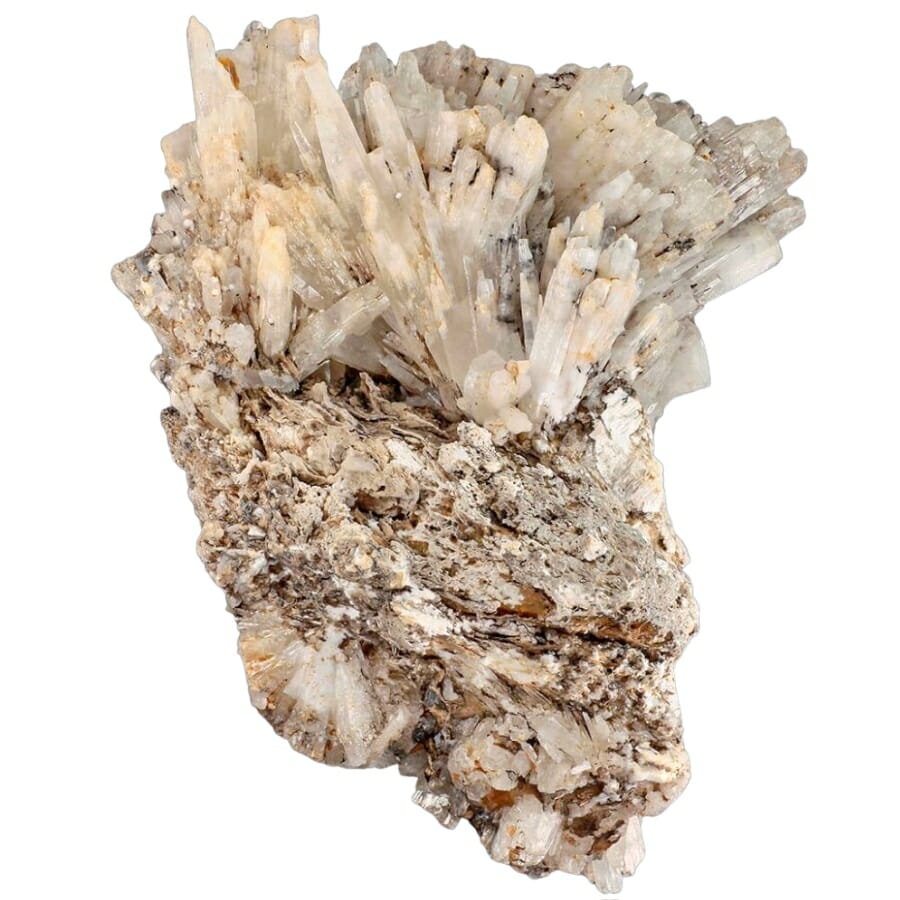
Strontianite is typically found in low-temperature veins in limestone regions. Picture this: groundwater carrying dissolved strontium, carbon, and oxygen flows into cracks in the limestone. Over time, these elements combine and crystallize into the mineral we call strontianite.
It contains strontium, a chemical element used in many ways: in making ceramics and glass, in medical treatments, and even in fireworks! You know the beautiful red colors you see lighting up the sky on the Fourth of July? Those are often created using strontium salts.
Strontianite is found in small amounts here in our state, usually as white, needle-like crystals.
Where you can find Strontianite in Illinois
You can find strontianite if you explore Mahoning No. 3 Mine in Hardin County.
The Gemstones Found In Illinois
Aside from our interesting rock and mineral deposits, our state also hides lots of mesmerizing gems that can capture anyone’s attention. If you’re ready to explore here for these natural wonders, you can use the following guides that we created:
Marcasite
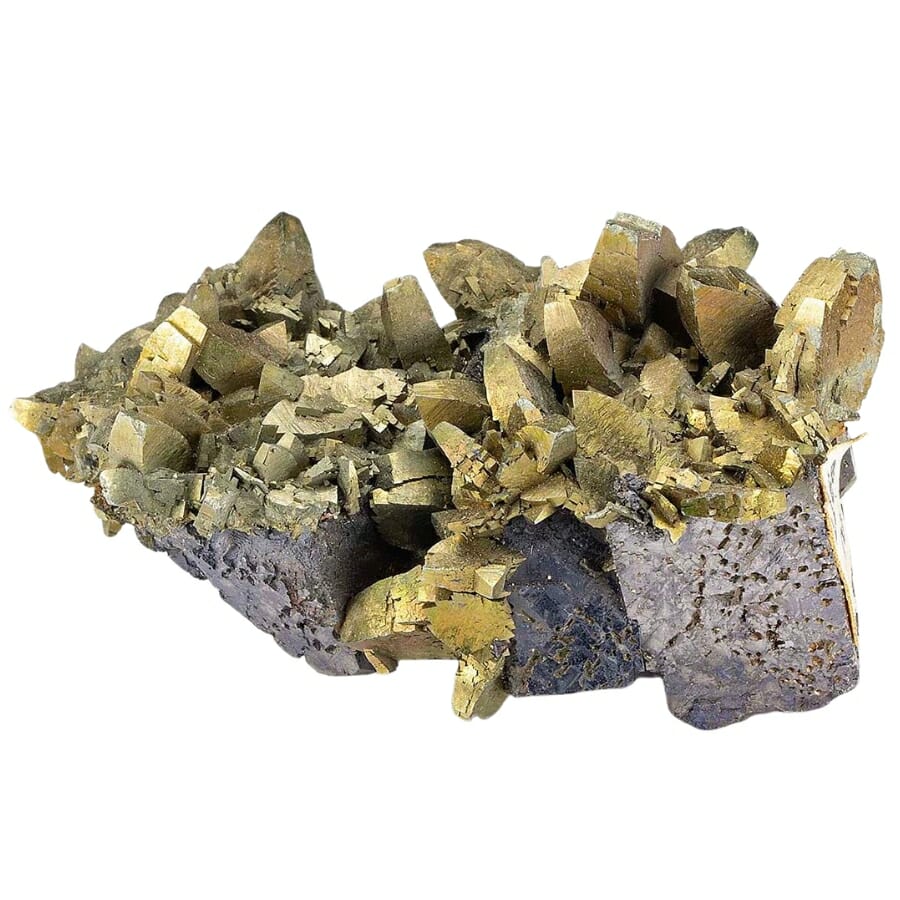
Marcasite often gets the spotlight in the world of jewelry, but don’t be fooled by its glamorous role— this gem has humble beginnings. It forms when iron sulfide minerals are subjected to low temperatures and pressures, often in sedimentary rocks like shale and limestone, or in hydrothermal veins.
But why is it so loved? In jewelry, marcasite is appreciated for its metallic luster and unique crystal forms. And while it might not have the high-value status of diamonds or gold, jewelry made out of it has a unique, antique charm that’s enjoyed worldwide.
The marcasite that you can find in our state is similar to that found elsewhere, usually presenting as a pale bronze or silver color, and often forming interesting, angular crystal shapes.
Where you can find Marcasite in Illinois
Spot marcasite when you visit and explore the following areas:
- Midland Coal Company Rapatee No. 5 Strip Mine in Fulton County
- Coal mine dumps in Gardner, Grundy County
- Terre Haute area gravel pits and mine dumps in Henderson County
Jasper
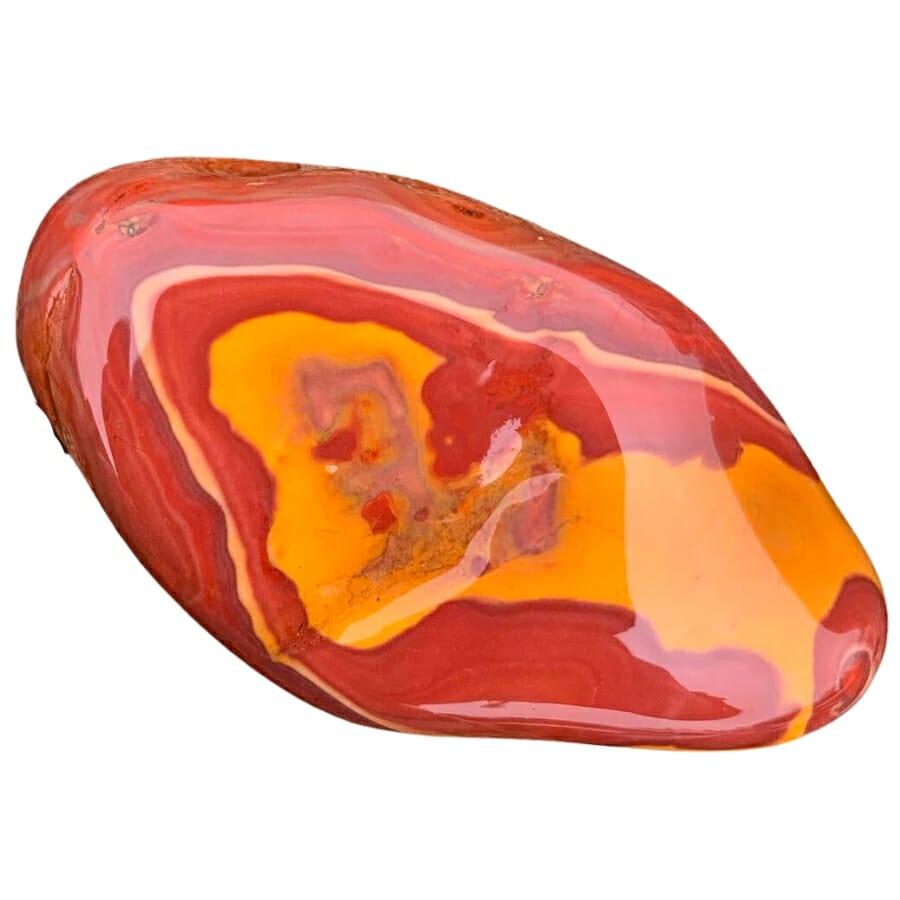
Jasper is a type of chalcedony that’s known for its array of colors and patterns. It forms from silica-rich fluids that fill spaces within rocks. Over time, these fluids harden into chalcedony, and if there are other minerals present, they can color the chalcedony to create jasper.
The value of jasper is not only because of its beauty. Known as a stone of courage and wisdom, it’s been used since ancient times for its believed healing properties and protective energies. On top of that, its hardness and durability make it perfect for carving and shaping into beautiful jewelry and decorative items.
Each piece of jasper found in Illinois is unique, showcasing a variety of patterns that are like the fingerprints of Mother Nature herself.
Where you can find Jasper in Illinois
If you want to find jasper here, you can explore places such as:
- Abandoned gravel pit in Hamilton, Hancock County
- Bishop Hill area in Henry County
- Materials Service Sand and Gravel Dycore Corporation in McHenry County
Siderite
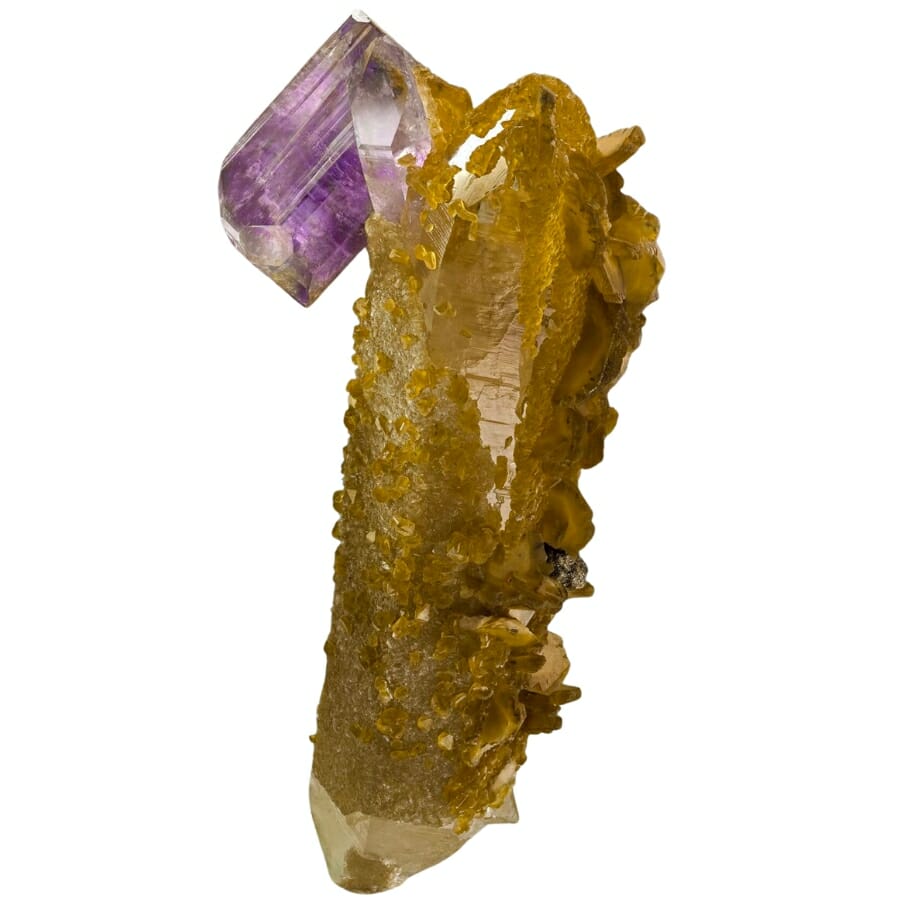
Siderite may not be as famous as some gems, but it’s still pretty awesome! It’s often found in sedimentary rocks, especially ones that were formed in environments with little to no oxygen. It forms when iron-rich waters slowly deposit layers over hundreds, thousands, or even millions of years.
Despite not being traditionally used in jewelry or as a decorative item, siderite plays an important role as an ore of iron, one of the most essential metals in the world. Iron from this gem helps build everything from cars to skyscrapers!
Besides that, some siderite specimens can be really beautiful, especially when they form those neat rosette shapes, making them attractive to collectors and nature enthusiasts.
Where you can find Siderite in Illinois
You can find siderite in the area deposits of Palestine in Crawford County and in Edwards County.
Barite
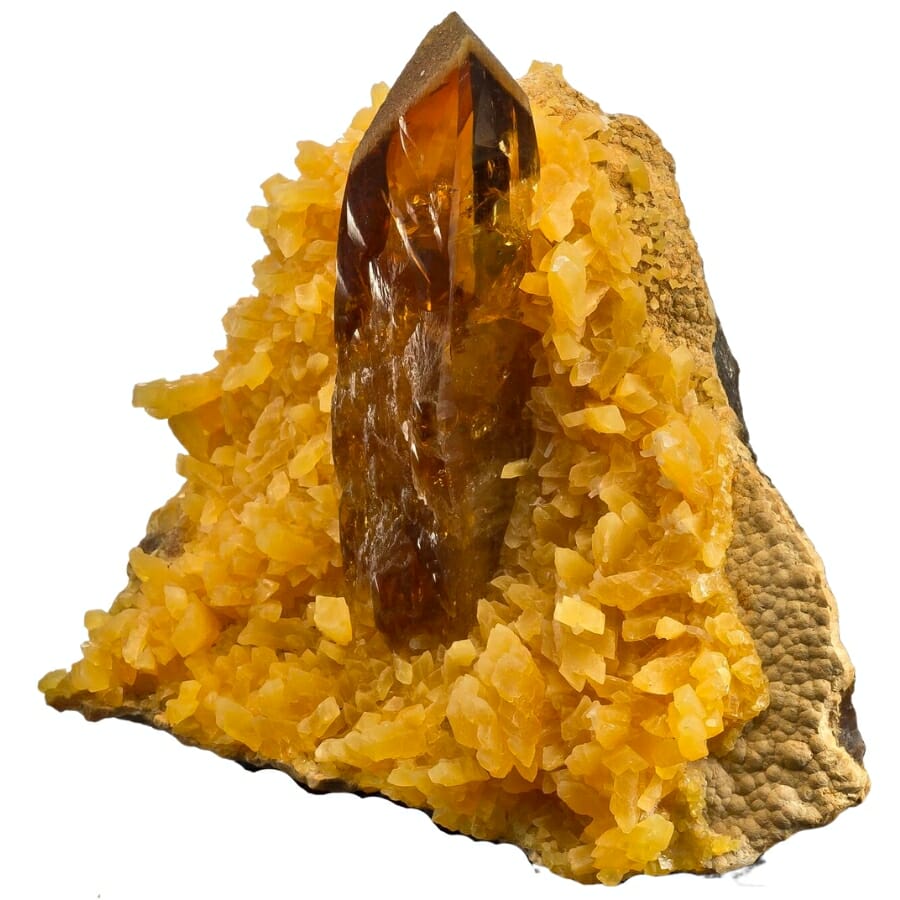
Often found in hydrothermal veins— which are like nature’s plumbing system— barite forms when hot, mineral-rich waters flow through cracks in rocks and cool down, leaving behind barite crystals.
This gem’s super heavyweight for a non-metallic mineral, which makes it pretty unique. This heaviness comes from the element barium, which is part of barite’s chemical composition.
This is also why barite is so valuable. Its weight makes it perfect for use in things like drilling muds, which are used in oil and gas drilling to help keep the drill bit cool and to carry away cuttings. Plus, barite is used in the production of barium, which is used in many industries from healthcare to electronics.
Where you can find Barite in Illinois
You can find barite if you explore the Cave-in-Rock area mine and Minerva Mine No. 1 in Hardin County.
Diamond
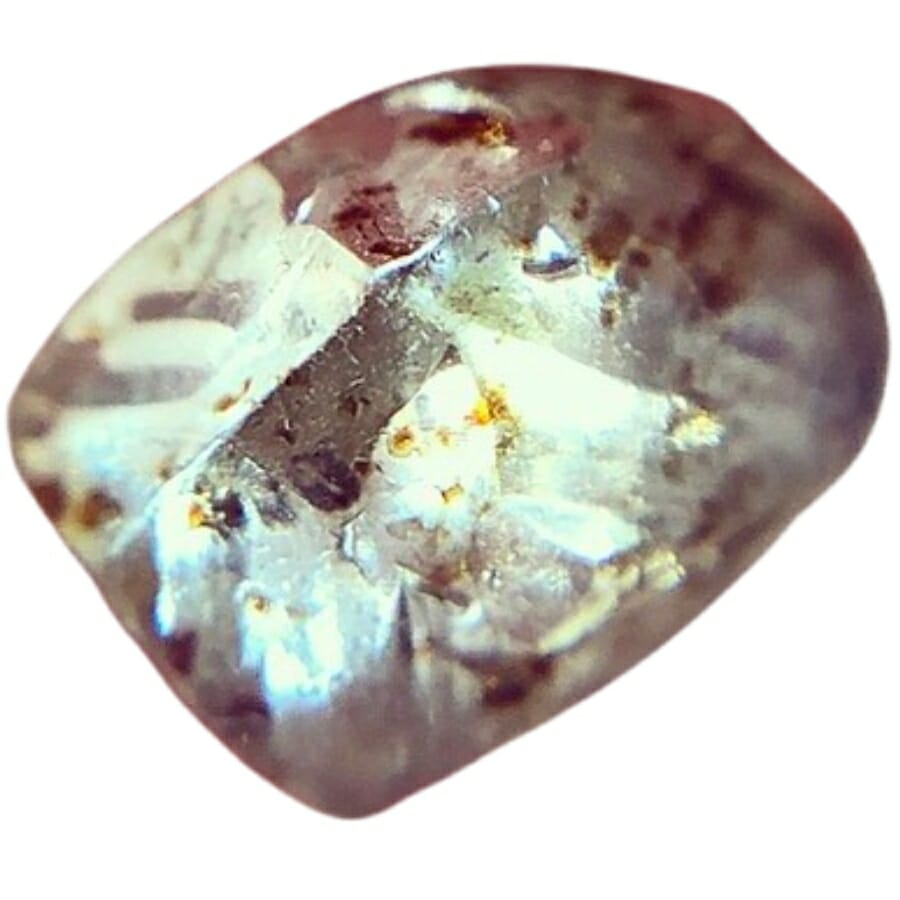
Diamonds are born deep, deep under the earth’s surface, over 100 miles down, where it’s incredibly hot and there’s a ton of pressure. Carbon atoms get squeezed together under these extreme conditions to form these gems. Volcanic eruptions then bring diamonds closer to the surface.
Diamonds are immensely valued for a few reasons. They’re the hardest known material on earth— perfect for cutting tools and, of course, enduring jewelry. Their amazing sparkle, or “fire,” makes them highly sought after for adornment.
But it’s not just about beauty and hardness. Diamonds are also used in scientific research and technology. For instance, diamond-tipped tools are used for precision cutting and drilling.
Where you can find Diamond in Illinois
We recommend exploring the following areas to locate diamonds in our state:
- Fayville area streambeds in Alexander County
- Rayse Creek in Jefferson County
- Troublesome Creek in McDonough County
Because diamonds’ features are somewhat similar to other gemstones, it’s often interchanged with other rocks and minerals. So to help you tell it apart from others, here are a few guides that we created:
The Crystals Found In Illinois
If the gems didn’t amaze you enough, wait until we cover the stunning crystals in Illinois. Wondering where to find them here? Check out this comprehensive guide that will point you to the great places that you should explore:
Agate
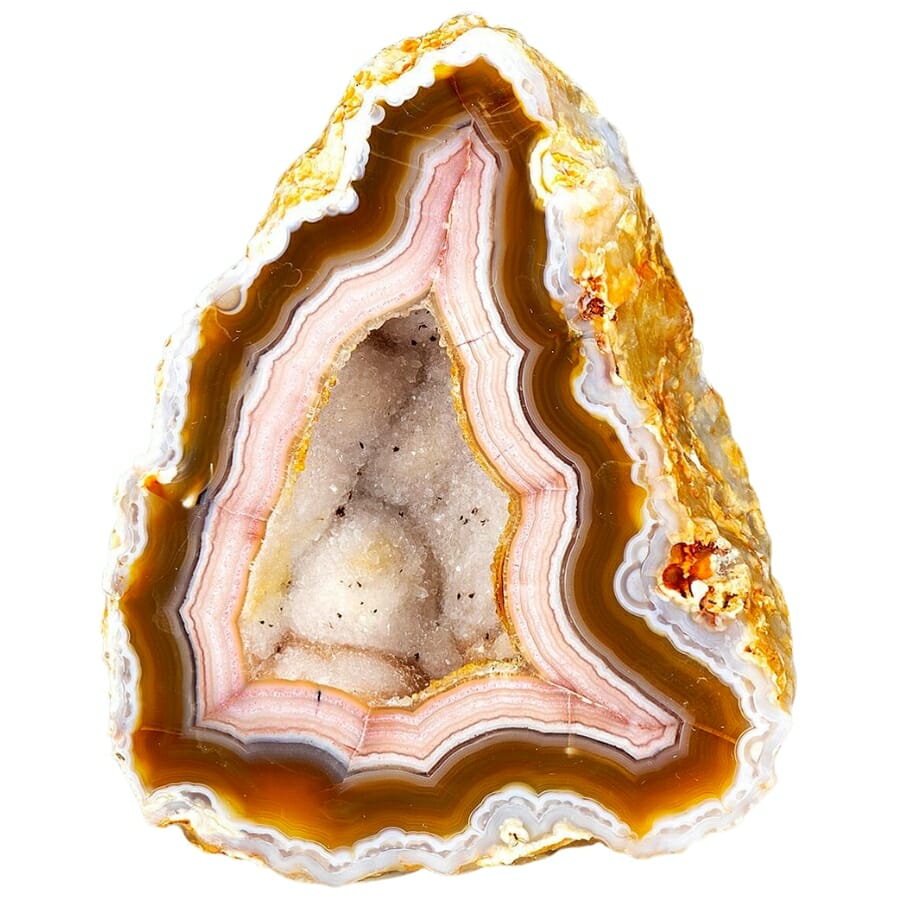
Agate, with its swirling colors and layers, is truly a marvel to behold! It forms when water rich in silica seeps into pockets within rocks. Over time, this silica solidifies into layers of microcrystalline quartz, creating the lovely banded patterns we associate with agate.
What influences agate’s value and price, you ask? Well, besides their obvious beauty, agates are durable and relatively easy to polish, which makes them ideal for jewelry, decorative items, and even practical items like paperweights and bookends.
But that’s not all! Many cultures value agates for their perceived healing properties. Some people believe that it can balance energy, protect against negativity, and even bring good luck!
Where you can find Agate in Illinois
If you’re in search of agate, you can look for it in the following areas:
- Thebes area gravel pits along the Mississippi River in Alexander County
- Local gravel pits of Warsaw, Hancock County
- East Dubuque area gravel pits in Jo Daviess County
Pyrite
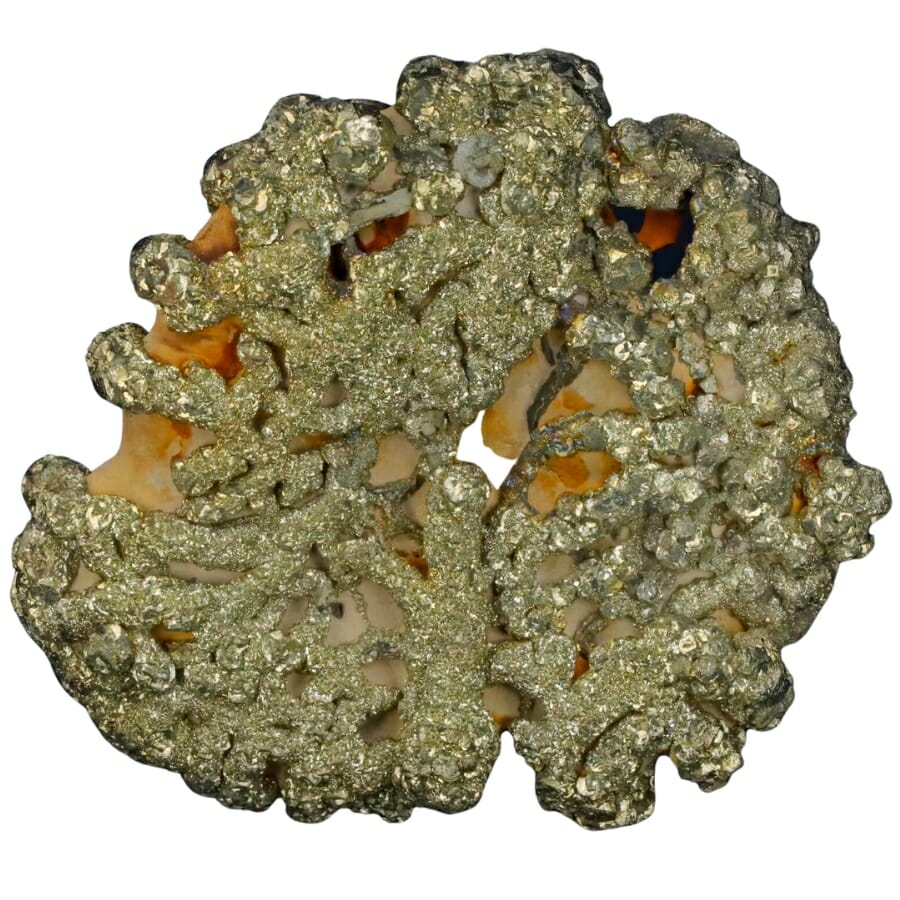
Pyrite, often known as “fool’s gold,” is an intriguing mineral that looks like it’s made of golden treasures!
It forms in a variety of environments, like sedimentary rocks, and even in coal beds and veins. This occurs when sulfur in groundwater combines with iron in rocks, creating pyrite’s shiny, metallic cubes.
This gem may not be actual gold, but pyrite’s value is not one to set aside, too. It’s used in the production of sulfuric acid, an important chemical used in many industries. On top of this, pyrite’s golden luster and unique cubic crystals make it a hit with mineral collectors, jewelry enthusiasts, and those who love decorative items.
Where you can find Pyrite in Illinois
To find pyrite here, you can visit places like:
- Coal City area strip coal mines in Grundy County
- Mahoning No. 3 Mine in Hardin County
- McClellan Mine in Pope County
Chalcopyrite
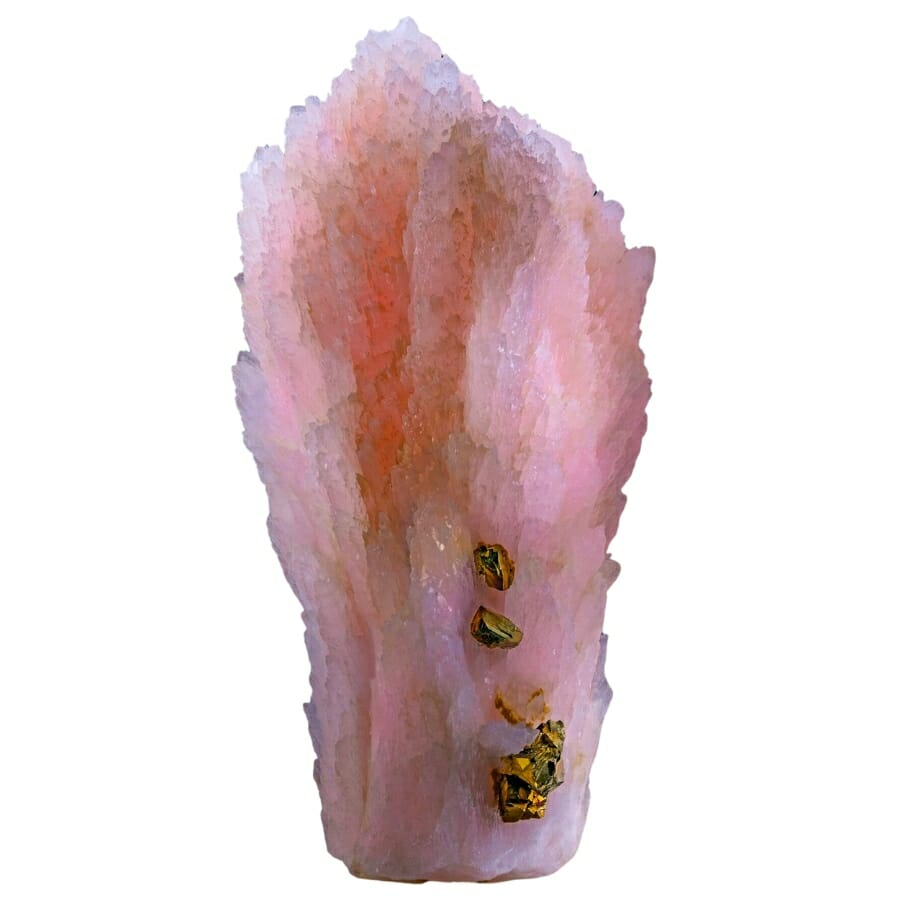
Chalcopyrite is one of those gems that will grab your attention with its brilliant colors! Often found in hydrothermal veins or in sedimentary and igneous rocks, it forms when copper, iron, and sulfur atoms come together in just the right way.
Chalcopyrite is not just pretty to look at, but it’s incredibly valuable too! It’s the most important copper ore on Earth. As you know, copper is used in everything from the wires that keep our lights on to the coins in our pockets.
Aside from its industrial use, chalcopyrite’s unique coloring makes it a favorite among mineral collectors. Its specimens are mostly known for their brass-yellow color that has a metallic luster. Over time, it can develop a tarnish that gives it a variety of colors, which can look like a peacock’s feathers!
Where you can find Chalcopyrite in Illinois
To find chalcopyrite, you can visit the area mines in Golconda, Pope County.
Calcite
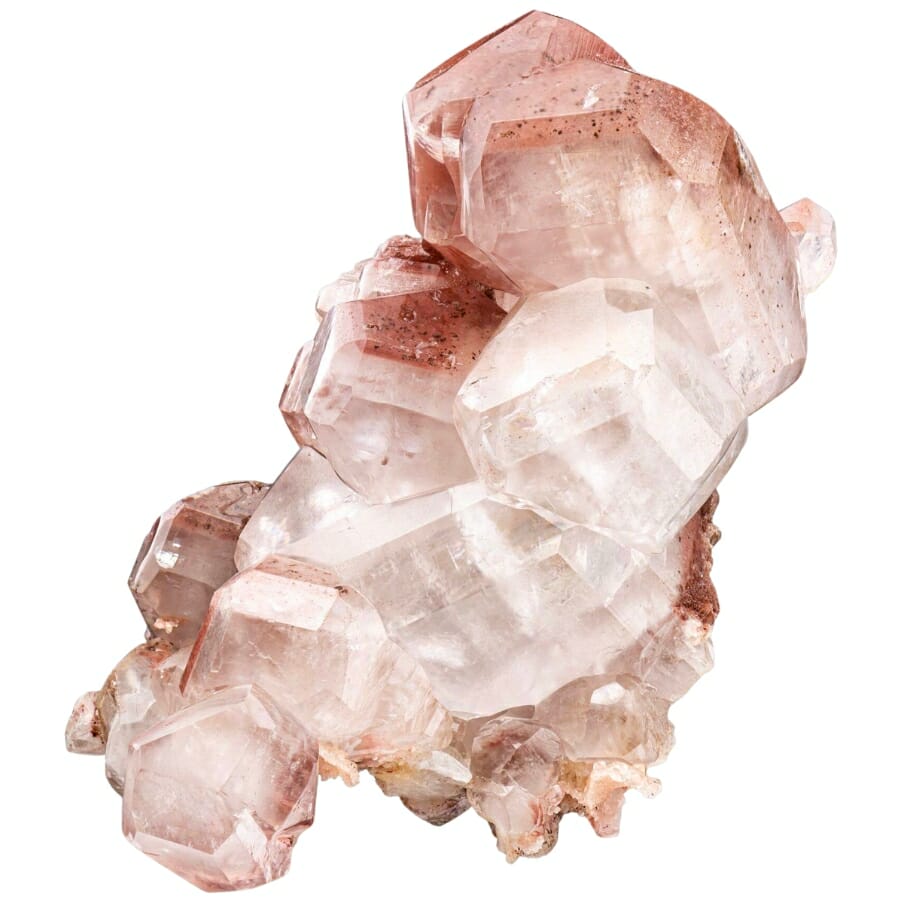
Calcite is not only abundant but also incredibly versatile in form and function. Forming mostly from the shells of marine organisms or from hot spring deposits, it takes shape when calcium, carbon, and oxygen atoms bond together in a crystal structure.
The value of calcite is pretty much based on its many uses. It’s used in construction materials, like cement and concrete. Even our roads have it in them! This gem is also a hit with collectors, thanks to its wide range of shapes and colors. One of its types, called “Iceland Spar,” is even used in optical instruments because of its unique light-bending properties.
In our state, calcite is pretty common in limestone and dolomite rocks. It can occur in a bunch of different shapes and colors: clear, white, yellow, or even blue or red!
Where you can find Calcite in Illinois
You can find calcite in different spots in our state, such as:
- Railroad Creek in Hancock County
- Warsaw Formation area in Hancock County
- Apple River area lead mine dumps in Jo Daviess County
Quartz
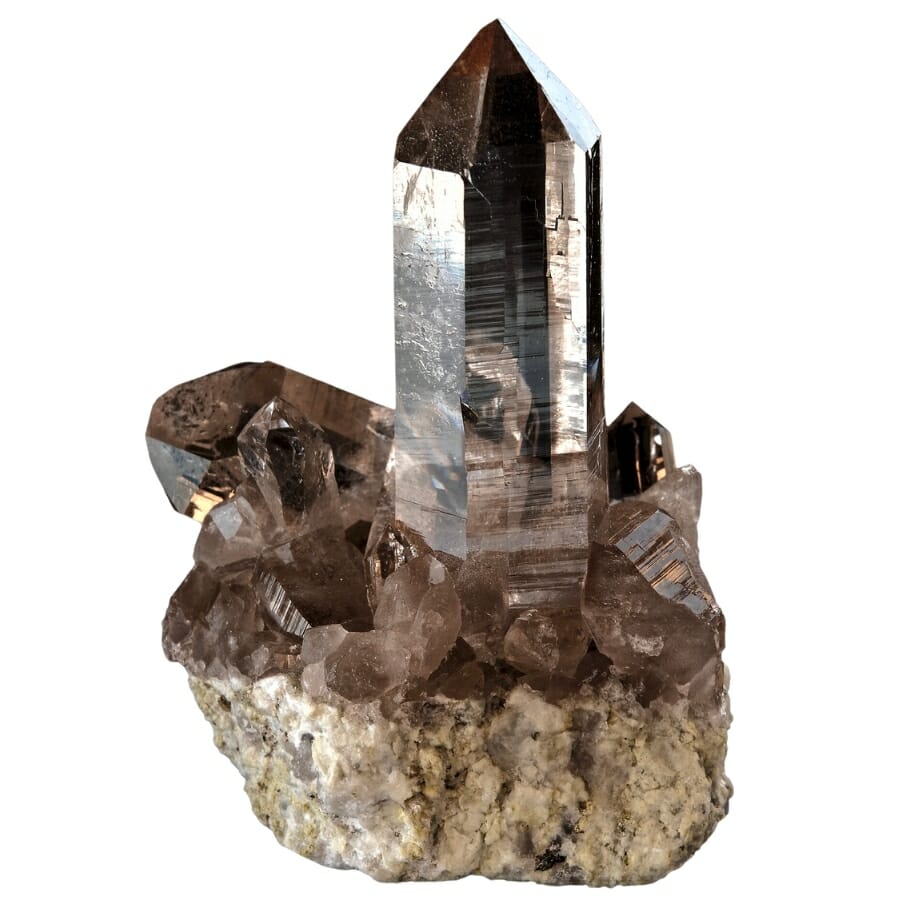
Made when silicon and oxygen atoms join together in a crystal structure, quartz can form in a variety of geological conditions, including igneous, metamorphic, and sedimentary rocks.
There are many factors that affect quartz’ value, and its uses are one of the most important of them. Its hardness and resistance to weathering make it super useful in glass making and construction. Even some of the sand on our beaches is made from broken-down quartz!
But quartz isn’t all about being tough and practical. Its different colors and crystal shapes make it a big hit with mineral collectors and jewelry makers. Some folks even believe different types of quartz have special healing properties.
Mistaking quartz for other rocks and minerals is a common occurrence, but fear not! Our user-friendly guides are designed to help you easily differentiate it from its look-alikes:
Where you can find Quartz in Illinois
To find quartz, you can visit the following different areas in Hancock County:
- Crystal Glen Creek
- Nauvoo State Park
- Warsaw Formation area
Tourmaline
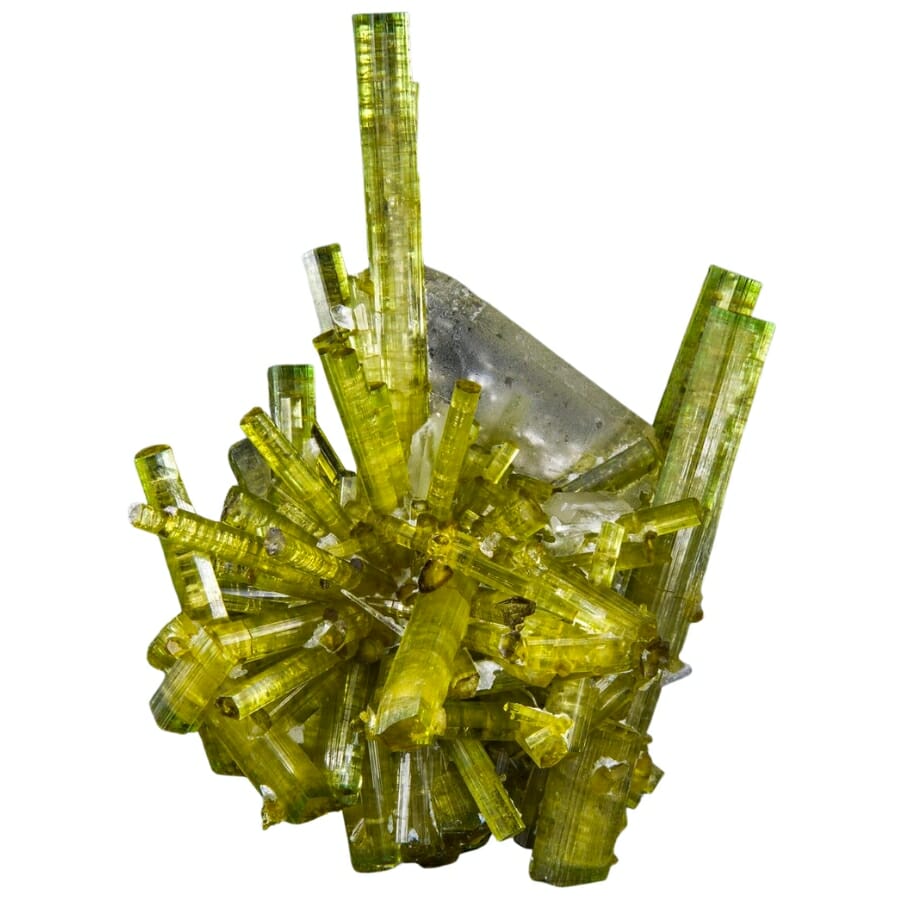
Tourmaline, with its rainbow of colors, is like a fireworks display! This dazzling gemstone forms in igneous and metamorphic rocks, where high-pressure and high-temperature conditions let elements like boron, aluminum, and silicon come together to create this beautiful crystal.
This gem’s wide range of colors makes it highly sought after for jewelry. A piece of tourmaline jewelry can showcase nearly every color you can imagine!
But it’s not all about the looks as it also has other unique properties. It’s pyroelectric, which means it can generate an electrical charge when heated. This property makes it useful in certain scientific and industrial applications.
Where you can find Tourmaline in Illinois
You can find tourmaline in the gravel pits of Road Fill Corporation in Kane County.
The Most Valuable Rocks and Minerals in Illinois
Now that we’ve discussed the different common rocks, minerals, gems, and crystals in Illinois, let’s go through the most valuable finds here. If you’re lucky enough, you might come across 1, 2, or all three of them.
Pearl
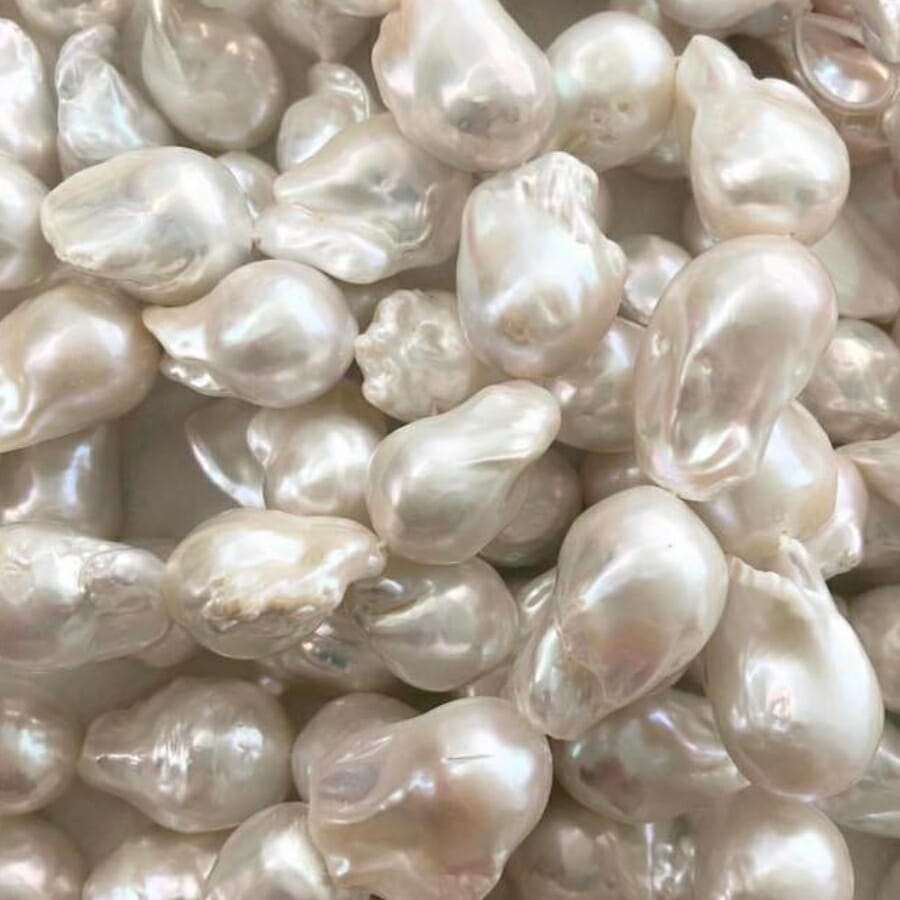
Pearls are real-life treasures that form inside living creatures. They come to life inside oysters, mussels, and some other types of shellfish. When a small bit of foreign material gets stuck inside the shell, the creature coats it in layers of a substance called nacre. Over time, these layers build up to create a pearl!
Now, most people ask, is pearl expensive? The answer is it can be! It’s not only because they are beautiful, but each pearl is unique and takes a long time to form. In fact, for centuries, pearls have been a symbol of elegance and luxury.
Luckily, you can find freshwater pearls in our state. While they’re not as common as the saltwater pearls that you might see in jewelry stores, freshwater pearls are unique and valuable in their own right. They might be slightly less round and shiny, but they come in a variety of beautiful shapes and colors.
Where you can find Pearl in Illinois
You can find lovely pearls at the Mackinaw River and its tributaries in McLean and Tazewell Counties, as well as the Panther Creek and its tributaries in Woodford County.
Smithsonite
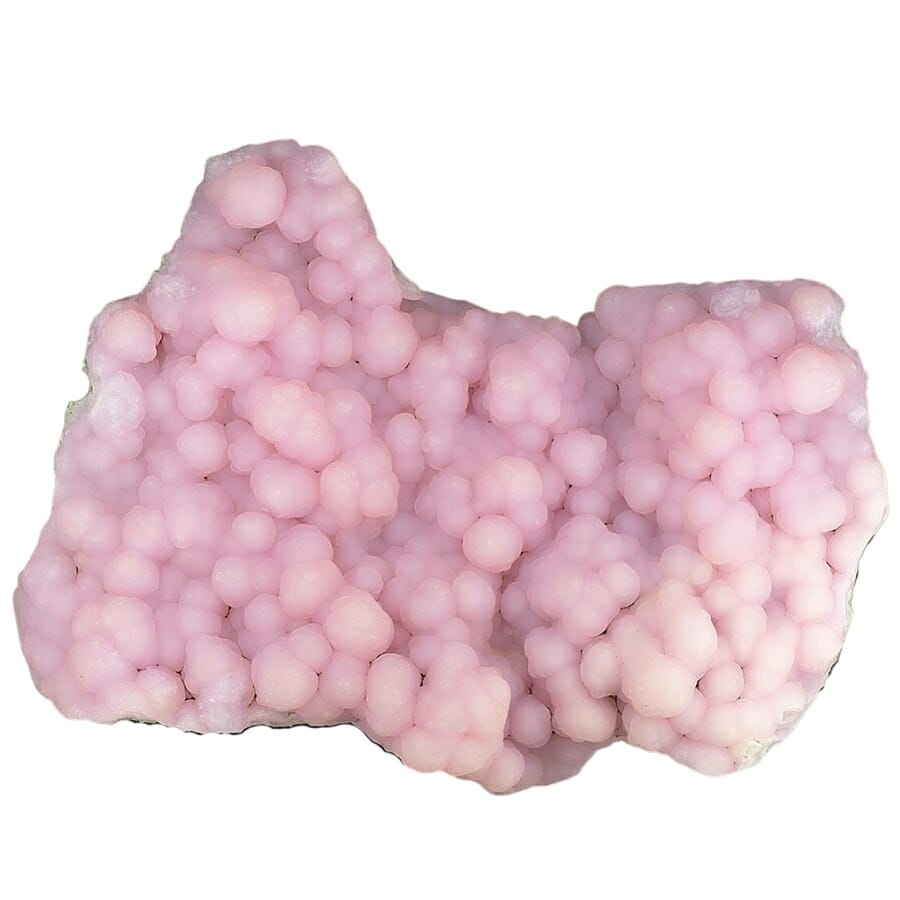
Smithsonite is a real show-stopper in the world of gems. This cool character forms in oxidized zinc ore deposits where zinc has been exposed to the air and weathered over time.
This gem’s rich colors and shiny surface make it a favorite among mineral collectors. It’s a treasure to find and a joy to display! But that’s not all. Smithsonite is also an important source of zinc, which is super useful in our everyday lives.
Fortunately, you can find smithsonite in Illinois, although it’s not very common. It comes in a wide variety of colors: blue, green, pink, brown, yellow, or even white. Plus, it often has a shiny or pearly luster that makes it super eye-catching.
Where you can find Smithsonite in Illinois
Explore the area mines of Golconda and the McClellan Mine in Pope County if you want to find smithsonite.
Silver
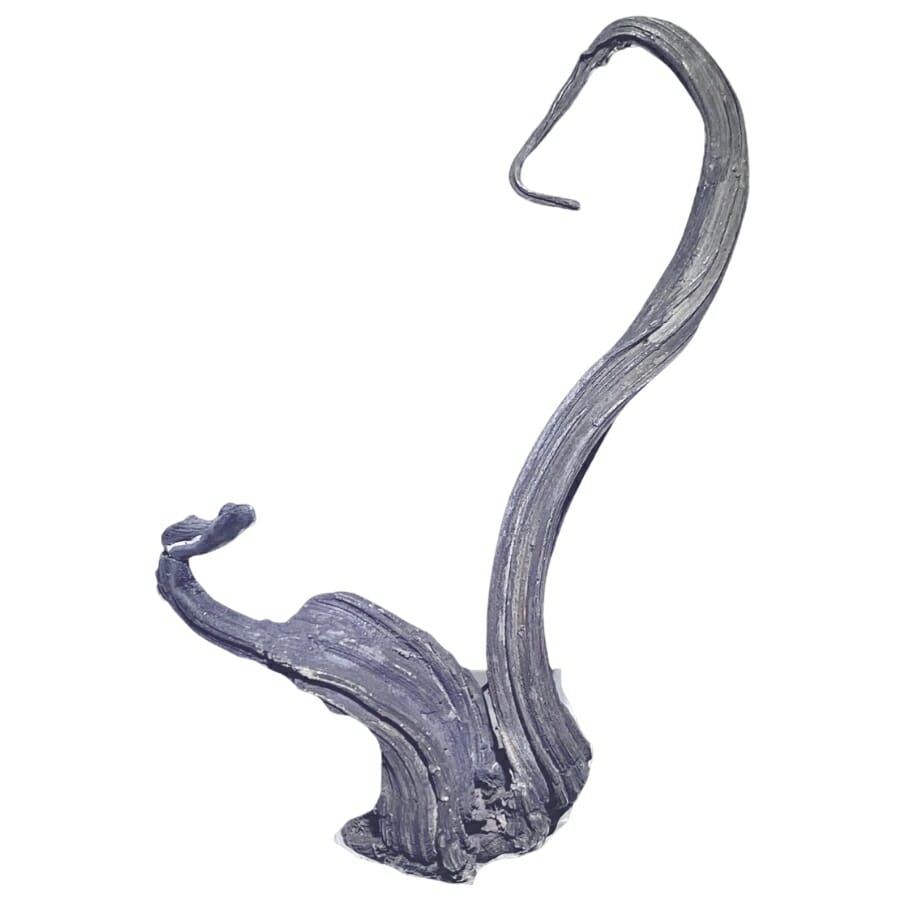
Known for its shimmering beauty, silver is an incredible metal with a story as rich as its shine! It’s formed deep inside the earth in a variety of mineral deposits. These include hydrothermal veins, where hot water rich with minerals cools and leaves behind deposits of valuable metals, including silver.
But why exactly do we value silver? First and foremost, its gleaming luster and durability make it perfect for jewelry and decorative objects. Who doesn’t love a shiny silver necklace or a beautifully crafted silverware set?
Aside from its looks, silver is also an exceptional conductor of electricity, making it vital for electronics. And did you know that it has antibacterial properties that make it important in medicine and various industrial applications?
Where you can find Silver in Illinois
Similar to smithsonite, you can find silver at the Golconda area mines and the McClellan Mine in Pope County.
How to Identify The Rocks and Minerals You Find
You don’t have to be an expert or have complex equipment to be able to successfully identify rocks and minerals. In fact, here are some simple tests you can do on your own if you want to identify a specimen:
Check the color of the specimen
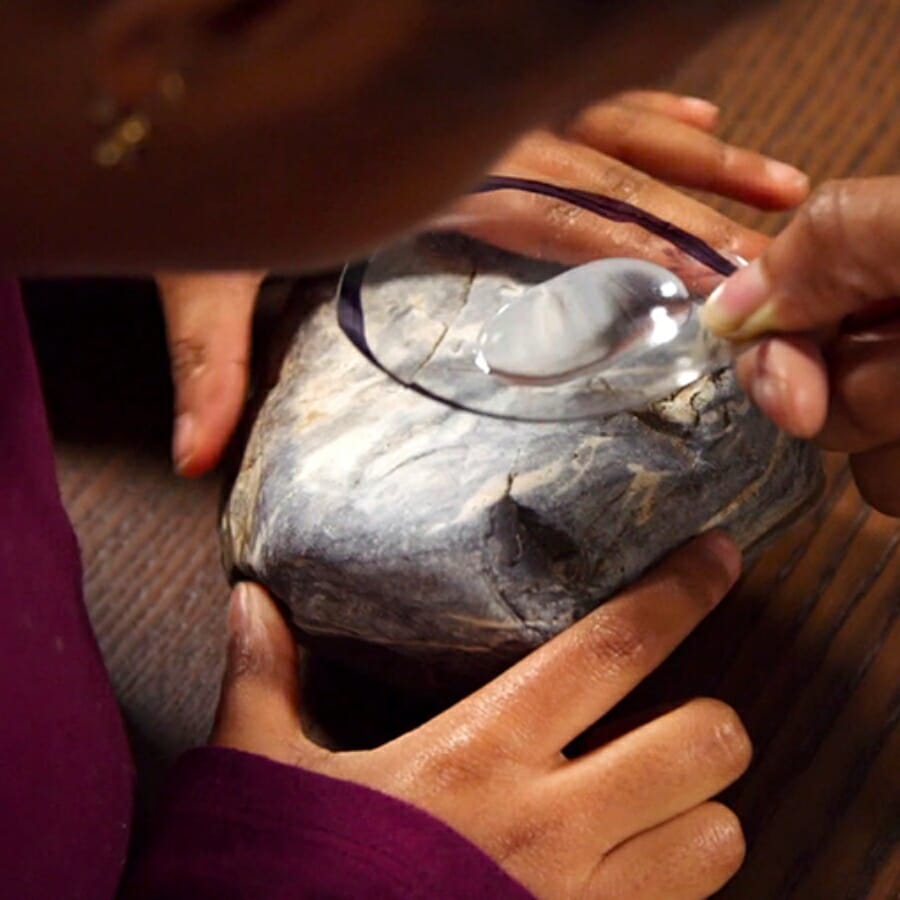
Color is the most obvious feature of a specimen. But be careful, as it can sometimes be misleading because a single sample can come in many different colors. Also, certain conditions, like weathering, can alter a rock’s color.
Nevertheless, checking a specimen’s color is a great starting point. A quick tip: wet the rock or mineral before observing it, as water can bring out its true color.
Do a scratch test
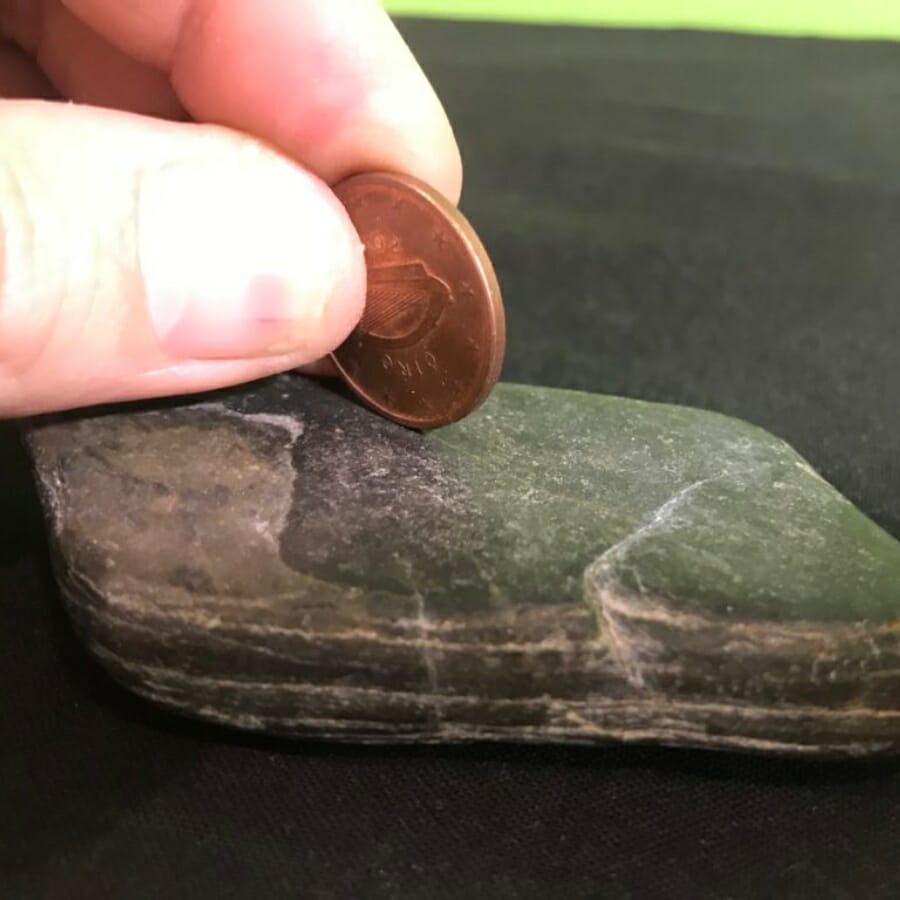
This test involves seeing how easily a mineral can be scratched. You can use common objects, like a fingernail, a copper penny, a steel nail, or a glass plate to test this.
For example, if a specimen can scratch glass but not steel, it has a hardness between 5.5 and 6.5. This method is called the Mohs Hardness Scale.
Conduct a quick streak test
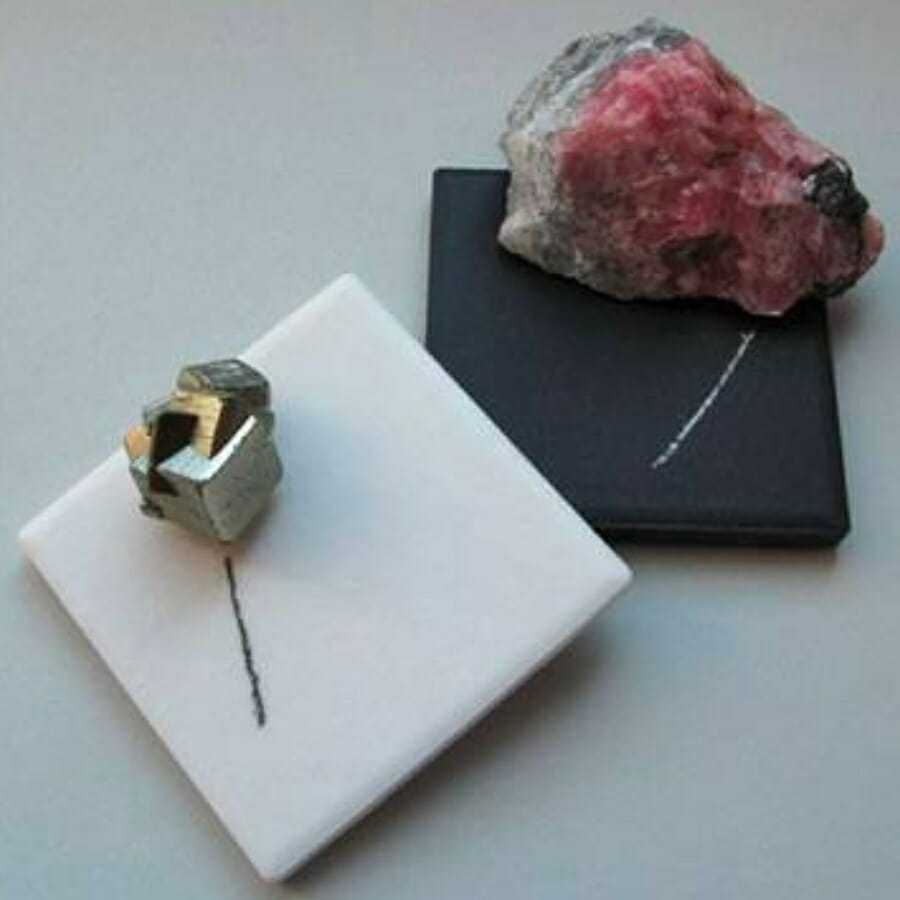
A “streak” is the color of the powdered specimen that you can see by rubbing it on a piece of unglazed porcelain tile, known as a streak plate. Even if the color of the mineral varies, the streak color stays the same, making it a reliable way to identify a mineral.
Observe the specimen for fracture or cleavage
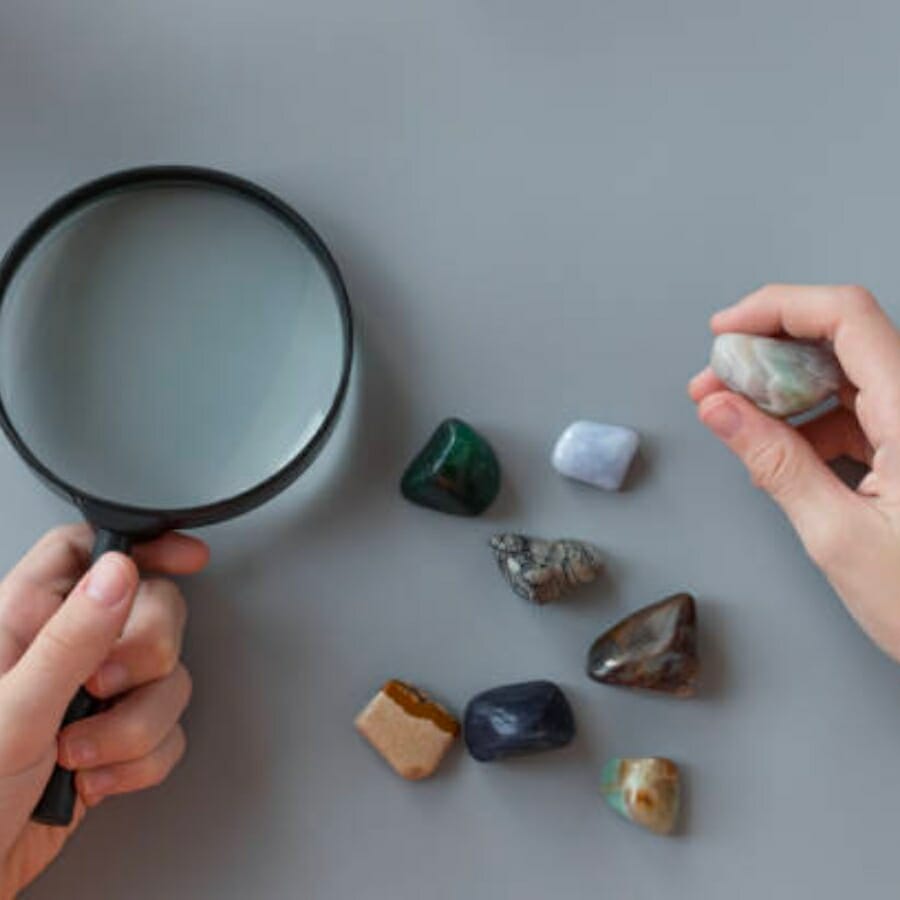
Cleavage is how a specimen breaks. Some specimens have cleavage, meaning they break along smooth, flat surfaces because their atomic structure has planes of weakness.
Meanwhile, others fracture, breaking in a more rough or jagged way. By observing these breakage patterns, you can gather clues about your mystery find.
See if it’s lustrous
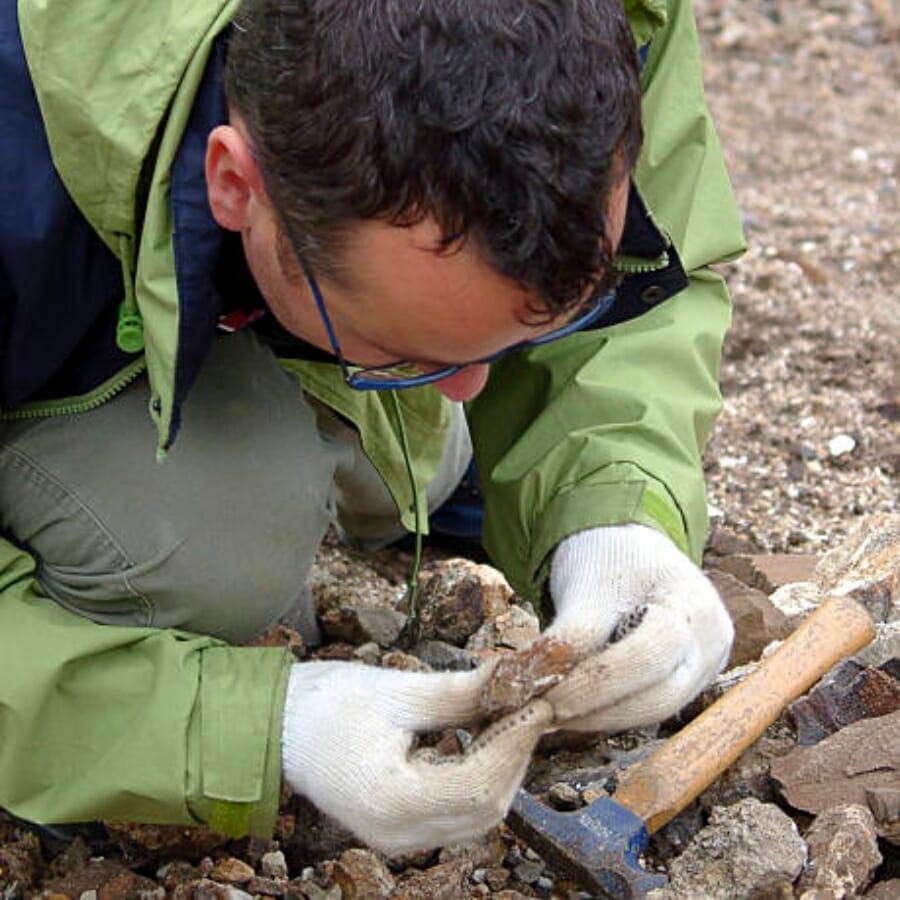
Luster is how a specimen reflects light. Look at your specimen and answer this question: does it shine like a metal or is it more dull or glassy?
Metallic, glassy, pearly, and earthy are just a few terms used to describe luster, and this characteristic alone can tell you a lot about what your specimen might be.

